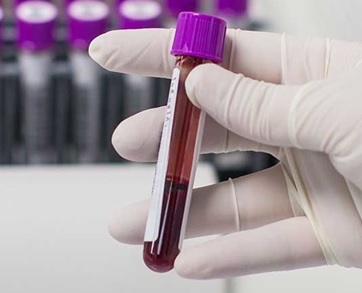Granulocytes are a type of immune cell that works to combat pathogens and repair damaged cells. Infections, cancer, inflammation, and a wide variety of other underlying health problems are associated with high levels. Low levels are mostly caused by infections, autoimmune diseases, medications, and a variety of other factors.
Granulocytes are the predominant form of white blood cell found in the human body. The “family” of granulocytes includes three different subtypes of white blood cells.
Three different kinds of granulocytes are found in the blood: eosinophils, neutrophils, and basophils. The distinct chemical components of the enzyme granules that are present in each variety of granulocyte are used to identify these cells. The various cell types are recognized and separated using this process.
The most typical kind of granulocytes is neutrophils. During its lifetime, a single neutrophil cell is capable of taking from five to twenty bacteria at a time. Eosinophils are involved in almost all immune system responses. In addition to playing a significant role in allergic reactions, they are capable of fighting off multicellular parasites like worms.
Basophils participate in allergic reactions as well. Both the inflammation-causing histamine and the blood-thinning heparin that prevents clotting are released by these cells. The granulocyte releases the granules to combat the issue when the immune system is being attacked by an asthma attack, an infection, or an allergic reaction.
Granulocytes are drawn to the location of the problem by chemical signals that are either present on the surface of harmful and invading substances or that are released by these substances. They combat the infection by discharging their granules when attracted to the area.
The bone marrow is the site of granulocyte development and survival; these cells only enter the bloodstream during the final hours of life. The typical lgE blood test, the Immature Granulocytes Test (IG), requires a small blood sample to determine whether the patient seems to possess bone marrow infection.
It is impossible to predict infection or sepsis using only the IG count. But when combined with other factors like cytokines, interleukins, and CRP, it helps with diagnosis and forecasting. It works better as a monitoring parameter for patients who are properly diagnosed and are receiving treatment.
It is still recommended to perform blood smear preparation on blood samples taken from unidentified patients who possess an elevated IG count.
Absolute immature granulocyte Test Normal Range
It is possible that the earliest sign of infection, inflammation or other stimuli to the bone marrow is the occurrence of immature granulocytes in the peripheral blood, which indicates leukopoiesis. Normal development of granulocytes occurs in the bone marrow prior to their release into the bloodstream.
The number of granulocytes in the blood is a parameter that is sometimes evaluated as part of a routine complete blood count (CBC). Granulocytes normally range between 1.5 and 8.5 x 109/L, or between 1,500 and 8,500 cells per microliter (L) of blood. The levels tested often differ slightly between laboratories.
In healthy people, less than 1% of the blood’s granulocytes are immature. Infections, inflammation, and cancer all cause a sharp rise in immature granulocyte levels.
Absolute immature granulocyte Test High and Low Ranges
More than 2% of total white blood cells are IGs, which indicates an elevated immature granulocyte count. The majority of the time, the doctors perform additional tests if the blood test reveals an elevated white blood cell count as well as a high immature granulocyte count.
“Left shift” is a term used by doctors to describe an increase in immature granulocytes in white blood cell counts. This merely indicates that the blood contains a greater number of immature white blood cells, which is typical when the body fights infection or inflammation.
Infection is often accompanied by other symptoms like sore throat, fever, flu-like symptoms, a persistent cough, and symptoms of a urinary tract infection. Low granulocyte count is typically the result of a blood/bone marrow disorder, such as aplastic anemia or leukemia. Cancer chemotherapy also causes this condition as a side effect. Insufficient granulocytes render the body more susceptible to infection.
Granulopenia, which is typically caused by neutropenia, is a term for levels below the normal range (low neutrophil levels). Agranulocytosis is defined as extremely low levels (less than 500 cells/L). Granulocyte levels affect the body’s capacity to fight infections. Granulocytosis is the term used to describe concentrations that are higher than this range.
 Health & Care Information
Health & Care Information



